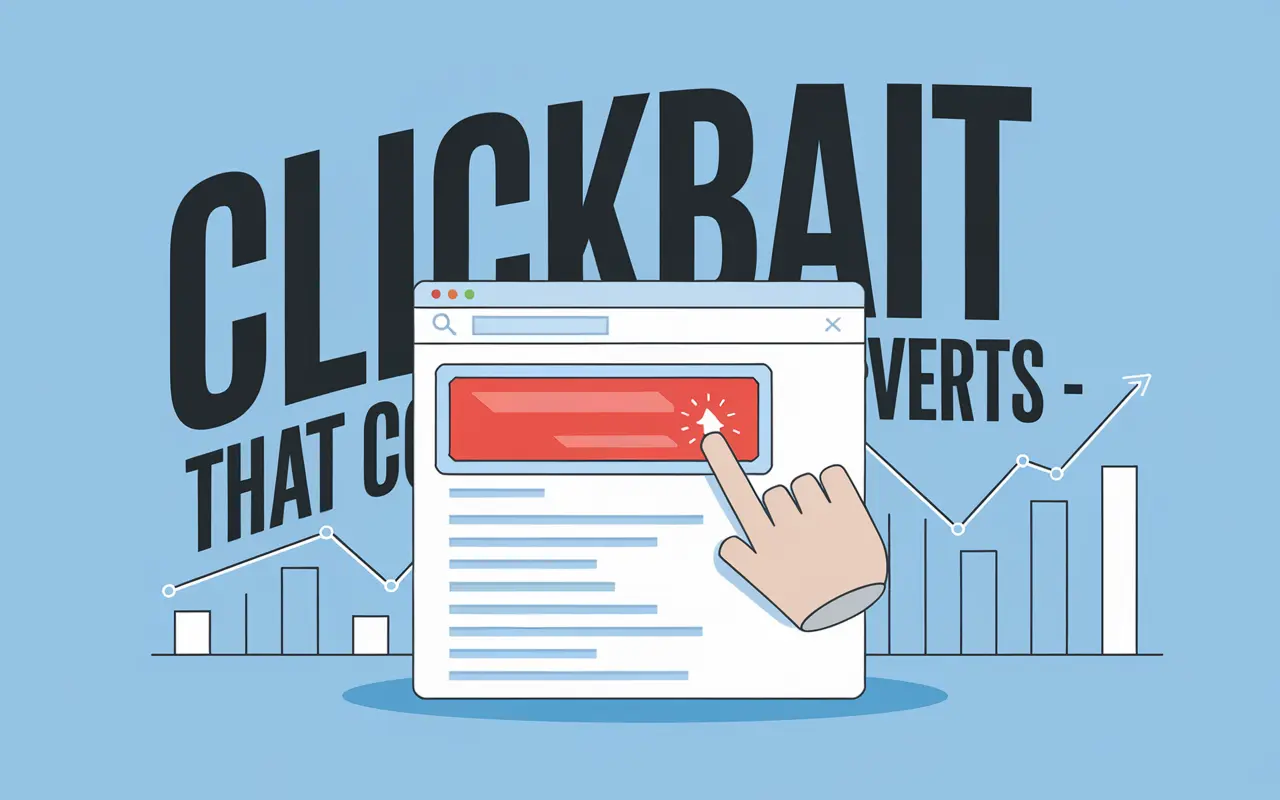Understanding Clickbait: Definition and SEO Relevance
Clickbait refers to highly enticing headlines or content thumbnails designed to attract users to click on a link, article, or video—often by exaggerating or sensationalizing information. While originally associated with deceptive tactics, clickbait has evolved to include attention-grabbing yet informative content that boosts click-through rates (CTR), user engagement, and traffic when used ethically.
In the world of SEO, Clickbait plays an important role in driving traffic, increasing engagement metrics, and standing out in cluttered search engine results pages (SERPs). Effective Clickbait, when aligned with user intent and content relevance, can improve brand visibility and signal strong topical interest to search engines—ultimately increasing ranking potential.
Key Takeaway
Key Takeaway
Clickbait, when used ethically, can significantly improve click-through rates and boost SEO performance by increasing user engagement and reducing bounce rates.
Why Clickbait Matters for SEO Strategy
Clickbait directly impacts several high-value SEO factors:
- Higher Click-Through Rate (CTR): An engaging headline can make your listing stand out on SERPs, which improves rankings over time.
- Lower Bounce Rates: When paired with valuable content, enticing titles keep users interested, reducing immediate exits.
- More Dwell Time: Catchy titles bring in users, and well-structured content keeps them there, signaling quality to search engines.
- Social Sharing: Buzz-worthy headlines are more likely to be shared, building backlinks and driving referral traffic.
Best Practices for Creating Ethical Clickbait
Here’s how to utilize Clickbait in an SEO-friendly and ethical manner:
- Match Headline to Content: Ensure the headline sets expectations that the content fulfills. Misleading users leads to high bounce rates and penalties.
- Use Power Words and Numbers: Terms like “Unbelievable,” “Shocking,” or “Here’s Why”—paired with stats or lists—help pique interest.
- Craft Emotional Connections: Create curiosity, surprise, fear of missing out (FOMO), or excitement to motivate clicks.
- A/B Test Headlines: Use tools like CoSchedule Headline Analyzer or Optimizely to test performance and iterate accordingly.
- Stay Authentic: Trust is key for SEO. Don’t cross the line into deception that may lead to penalties or distrust.
How Clickbait Works in the SEO Ecosystem
Hooking the User
Clickbait starts with a compelling headline or thumbnail. This content acts as a ‘hook’ that stands out on platforms like Google, YouTube, or social media.
Driving CTR and Engagement
When users engage with a clickbait link and stay on the page, this boosts metrics like dwell time and CTR—two indirect but highly valuable SEO signals.
Signaling Quality to Search Engines
Increased engagement indicates to search engines that your page meets user intent. This can lead to improved rankings and greater exposure over time.
| Clickbait Element | SEO Benefit | Risk Level |
|---|---|---|
| Emotional Trigger Headlines | Higher CTR and engagement | Medium |
| Listicles (e.g. “Top 10…“) | More time on site | Low |
| Teaser Phrasing (“You Won’t Believe…”) | More clicks from SERPs | High (if misleading) |
Case Study: Clickbait Title Strategy Boosts SEO ROI
Problem: Low Engagement and Poor CTR
An eCommerce blog was receiving substantial organic traffic but seeing user dwell time drop, with a CTR of only 3.2% on average blog posts.
Solution: Introduced Clickbait-Style Headlines
We restructured blog titles using curiosity-driven formats such as “You Won’t Believe These Genius Products Under $20” while maintaining content relevance. Titles were A/B tested to maximize engagement.
Results: 68% Increase in CTR & Better ROAS
CTR rose to 5.4%, leading to 31% more traffic within 45 days. Bounce rates decreased by 19%, and ROAS improved owing to more product detail page views.
Common Mistakes to Avoid When Using Clickbait
- Deceptive Headlines: Misleading users can lead to high bounce rates and Google algorithm penalties.
- Over-Sensationalization: Excessively dramatic titles can harm brand reputation and reduce trust over time.
- Ignoring Value Delivery: High CTR without valuable content frustrates users and sabotages repeat visits.
- Poor Content Alignment: Headlines should directly match the user intent and page topic.
Related SEO Glossary Terms
- CTR (Click-Through Rate): Measures how often users click on your link from SERPs—directly influenced by clickbait usage.
- Bounce Rate: Indicates how quickly visitors leave your page after clicking. Clickbait headlines with poor content can worsen this.
- User Intent: Successful Clickbait aligns with what users are looking for, ensuring a better user experience and result relevance.
FAQs About Clickbait
Clickbait is a tactic of using emotionally compelling headlines or thumbnails to encourage clicks on digital content, often used to improve CTR in search and social media results.
Misleading Clickbait can hurt SEO by increasing bounce rates and reducing user trust. However, ethical Clickbait that adds value improves SEO metrics.
Yes, Clickbait can significantly improve CTR by making page titles and snippets more appealing and compelling to users.
Examples include titles like “10 Ways to Save Money You Didn’t Know About” when the content genuinely delivers unexpected and helpful tips.
Conclusion: Use Clickbait Smartly to Boost SEO Performance
Clickbait, when leveraged responsibly, is a powerful SEO and content marketing tool. It boosts CTR, drives user interest, and improves critical engagement metrics necessary for better rankings. However, alignment with user intent and content transparency is essential to avoid penalties and build trust. Businesses and marketers should not ignore clickbait—rather, they should refine and elevate it into a strategic advantage.
Explore more insights and actionable tips on our full suite of SEO services to enhance your website’s performance.






